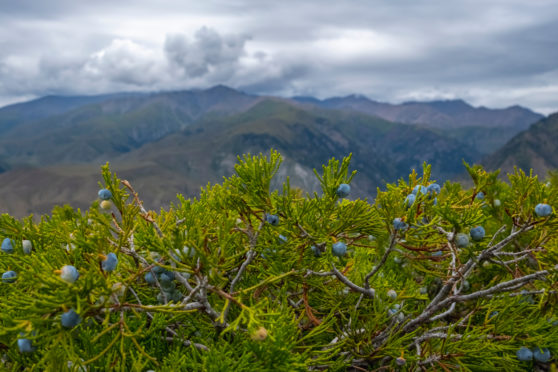
An invasive plant disease is posing a threat to the UK’s gin industry, according to new research.
The Phytophthora austrocedri pathogen has been found to be spreading through juniper trees in Scotland, which produces 70% of the spirit across the four nations.
Experts at the Plant Health Centre, including Professor Fiona Burnett from Scotland’s Rural College, warn other spirits such as whisky could also be hit by disease.
Prof Burnett said: “Plant Health Week is a chance to flag that everyone can play their part in protecting Scotland’s plant health assets.
“Whisky is equally at risk to gin through barley diseases which slash crop yields.
“But the principles of best plant health practice such as sourcing seed and plants with care and avoiding moving problems inadvertently in soil apply equally to field crops and the plants in our moorlands, gardens, forests and fields.”
The pathogen has entered Britain through the plant trade and may have got into juniper woodlands through well-intentioned planting schemes.
It lives in the soil and spreads in both soil and water, infecting juniper roots and killing large numbers of trees, especially on wet sites.
Although gin – an industry worth £3.2 billion to the UK economy – can be produced from spirits derived from a wider choice of grains or even potatoes, it relies on juniper berries for its traditional and distinctive flavour.
In a blog for Plant Health Week, Prof Burnett, along with Sarah Green from Forest Research and Professor Sarah Gurr from the University of Exeter, also highlights the threats faced by the Scotch whisky industry from diseases such as Ramularia, which can slash barley yields.
Researchers in Scotland have found some junipers are resistant to the disease and it is hoped natural regeneration will allow juniper populations to recover over time.
Science is also helping to identify sites that are less vulnerable to the pathogen and which can be targeted for conservation and protection.
Members of the public can also take simple steps to help protect the gin industry.
These include cleaning soil from boots, bike tyres and dog paws before and after visiting forests, moors and woodlands to prevent disease spreading to new sites.

Enjoy the convenience of having The Sunday Post delivered as a digital ePaper straight to your smartphone, tablet or computer.
Subscribe for only £5.49 a month and enjoy all the benefits of the printed paper as a digital replica.
Subscribe